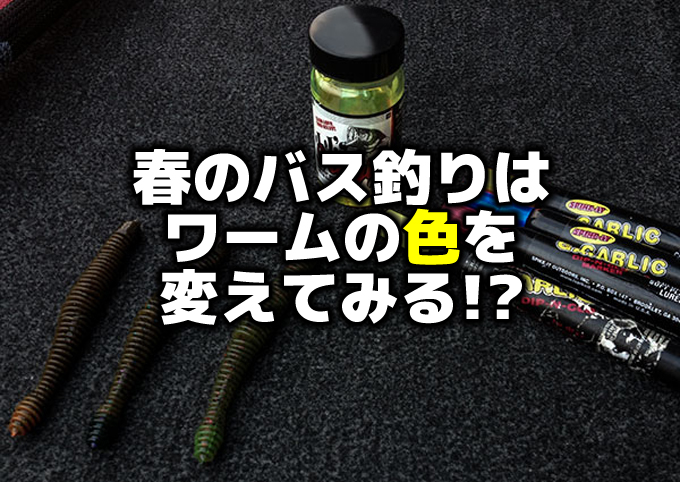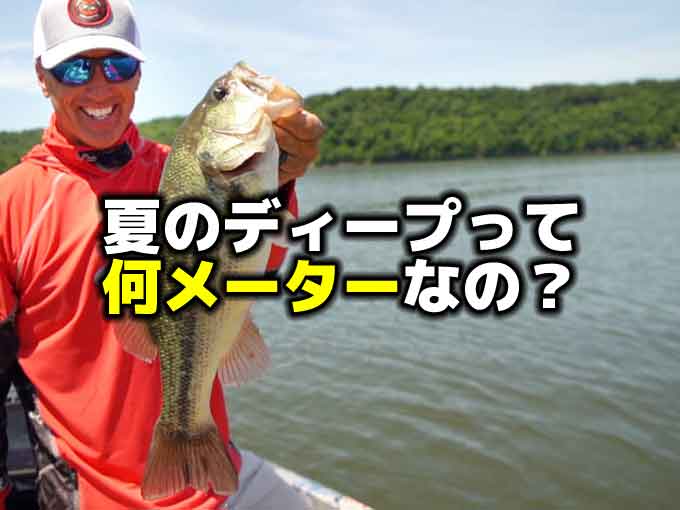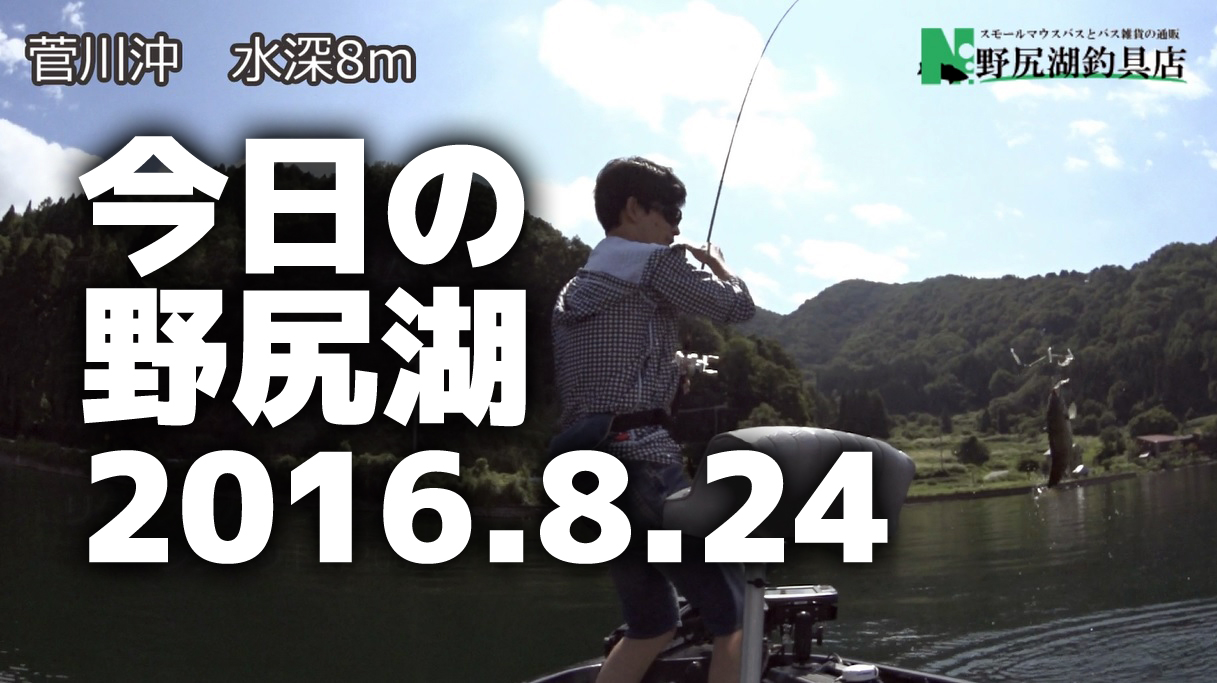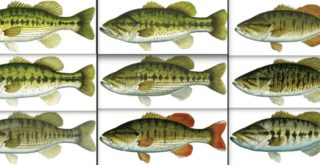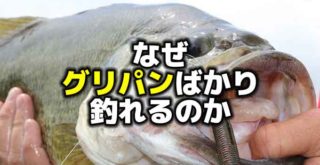スモールマウスバスのスポーニング

こんにちは!店長の小山です!
本日は海外サイトより”Spawn-time smallmouth”という記事を引用してご紹介いたします。
引用先:bassmaster.com”Spawn-time smallmouth” by Don Wirth March 8, 2012(海外サイトです)
現在、日本国内ではスモールマウスバスは限られた場所にしか生息していません。そういう意味も含めて、多くのバスアングラーはスモールマウスバスフィッシングの攻略は難しいとしています。
そんな中、グッドサイズのスモールマウスバスを釣るということであればやはり外せないのが春、スポーニング期間です。
年間を通して、ラージマウスバスよりもよりディープで過ごすスモールマウスバスがシャローに上がってくる期間ですので、エリアも絞りやすく、細かな地形変化などに惑わされることも少ないため、チャンスは大きいでしょう。
しかし、そんなスポーニング期間ではあるものの、ラージマウスバスに比べると様々なデータが不足していたり、情報が出てこないため、チャンス期間といってもまだパターン化するまでには至っていないのが現状です。
なんとかチャンスを最大化したいものですよね。
ここでは、アメリカのバスマスターサイトがケンタッキー州の世界最大のスモールマウスバス記録を出したデールホローレイクのガイドのマクリントックさんと、アラバマ州ピックウィックレイク(リザーバー)のガイドのハッカーさんにインタビューした記事が載せられています。
このインタビュー記事から、日本のスモールマウスバスのスポーニング期間に通じるヒントがないかどうか、読んでみてください。
BASSMASTER: At what water temperature do you find smallmouth beginning to move into their spawning areas?
McCLINTOCK: The first ones make their move when the water hits the mid- to upper 50s. This is a good time to catch a giant fish at Dale Hollow – I’m convinced the biggest ones move in first to find the choicest spawning areas.
HACKER: The 53 to 55 degree range is magic for big prespawn fish at Pickwick.
バスマスター:どれくらいの水温でスポーニングエリアに移動するのですか?
マクリントック:水温が10℃から12℃以上になってくると、第一陣が移動します。これはデールホローで巨大なバスをキャッチするのに良い時期です – 私は、最も大きいものが最初に産卵場所を見つけるために動くと確信しています。
ハッカー:11℃〜12℃度の範囲は、ピックウィックのビッグプリスポーンを釣る魔法です。
BASSMASTER: Do smallmouth “stage" or hold for a period of time in deeper water adjacent to spawning areas the way largemouth do? And, are staging smallies catchable?
McCLINTOCK: The initial move they make out of deep channel structure, where they spend the winter, is to a ledge or sharp dropoff close to a potential spawning spot. They’ll hold there 20 to 30 feet deep and wait for conditions to get right before moving up to spawn. Staging fish are most catchable when the wind is howling — they’ll move shallower and slam suspending jerkbaits, crankbaits and spinnerbaits. On calm days, they’ll sit on the bottom around a solitary stump or rock; you’ll have to slow roll a big willowleaf spinnerbait or bump a jig to catch 'em.
HACKER: Staging smallies will bunch up in big numbers downstream of a spawning area in places where the lake narrows down. I’ve had many days on these neck-down spots when our biggest five weighed over 30 pounds, sometimes with multiple 7-pounders. A compact leadhead bait like a tube, bucktail or Sassy Shad popped repeatedly off the bottom will whack 'em.
バスマスター:ラージマウスのように、スポーニングエリアに隣接するディープでスモールマウスが一定期間たまるような「ステージ」はありますか?そして、ステージングしたスモールはキャッチ可能ですか?
マクリントック:彼らが冬を過ごすディープチャンネルの地形変化からの最初の行先は、産卵しようとする場所の近くのレッジ(水中の岩棚)または急なドロップオフ(カケアガリ)です。彼らはその6〜9メートルの深さに位置し、産卵に適した条件が成立するのを待ちます。ステージング中の魚は、風が吹いているときに最もキャッチすることができます – 彼らはよりシャローへと移動し、サスペンドジャークベイト、クランクベイト、スピナーベイトにアタックします。穏やかな日には、ボトムにある単独のスタンプや岩のまわりでじっとしています。それらをキャッチするためにはビッグウィローリーフのスピナーベイトをスローロールするか、ラバージグをボトムバンプする必要があります。
ハッカー:湖が狭くなる場所では、スポーニングエリアの下流にステージングのために大きな個体のスモールマウスバスが集まります。私は大きい方から5匹のウエイトで30ポンド(13.6㎏)を超え、時には複数の7パウンダー(3キロフィッシュ)をキープしていたときは、この狭くなった場所の下流で何日も過ごしました。コンパクトなリードヘッドベイト(魚の顔の形をしたジグヘッド)に、チューブワーム、シャッドテールワームまたはバックテール(ヘアジグ)のようなもので、ボトムを繰り返し叩くことで、アタックしてくるでしょう。
BASSMASTER: Where, and how deep, do smallmouth spawn?
McCLINTOCK: Smallies will use flats, humps and long points with pea gravel, fine shale and hard clay bottoms. Since Dale Hollow is normally clear, they spawn deep – 8 to 15 feet, down to 20 feet some years. If the lake is stained from unusually heavy rains, they may spawn much shallower, 3 to 5 feet, but this is rare.
HACKER: A biologist who works Pickwick told me that smallmouth, as a species, don’t require as much sunlight to incubate their eggs as largemouth, which explains why they spawn down to 18 feet here, even though the water is murky. They rarely spawn shallower than 6 feet; I’m convinced the biggest fish spawn deepest.
バスマスター:どこで、どのくらいの深さでスポーニングするのですか?
マクリントック:スモールマウスは砂利や細かい岩および硬い粘土質のボトムのフラットやハンプや長い岬を使用します。デールホローは通常クリアですので、2.5~4.5メートルの深さ、ここ数年は6メートルの深さでスポーニングをします。雨が異常に多く濁りが入った場合は、もう1〜1.5メートルほど浅い側でスポーニングすることがありますが、これはまれです。
ハッカー:ピックウィックで働く生物学者は私に、スモールマウスバスは種として、なぜたとえ水が濁っていたとしても、6メートルの深さでもスポーニングするのかと言えば、孵化するのにラージマウスバスより日光を必要としないからだと説明しました。彼らはめったに6フィートよりも浅く産卵しません。私は最大の魚が最も深く産卵すると確信しています。
BASSMASTER: At what water temp can you expect smallmouth to be spawning?
McCLINTOCK: Anywhere from 58 to 70 degrees, but I find they spawn more by moon phase than water temperature. I normally catch my biggest spring fish in spawning areas one or two days before the full moon in April.
HACKER: Many fish will be on beds here when the lake hits the low to mid-60s around the new or full moon, but I’ve caught smallmouth that were discharging fully developed eggs in 79 degree water. They aren’t as cold-natured as most fishermen think.
バスマスター:どのくらいの水温でスモールマウスバスはスポーニングするのですか?
マクリントック:どのエリアでも14℃から21度ですが、私は水温よりも月の満ち欠けによってスポーニングに入ると思っています。私は通常、4月の満月の1〜2日前にスポーニングエリアで春の最大の魚をキャッチします。
ハッカー:湖の水温が15℃から18℃前後の新月や満月のころに多くの魚がネストにいますが、私は26℃の水温のときに卵で腹がパンパンのスモールマウスをキャッチしました。彼らはほとんどのアングラーが考えるほど冷水性ではないでしょう。
BASSMASTER: How do they relate to cover when spawning?
McCLINTOCK: Very loosely. They like a gravel flat or hump with a few scattered stumps or patchy weeds on it.
HACKER: Pickwick smallmouth often use cover as current breaks. They’ll make a bed right behind a rock or stump directly in the current’s path.
バスマスター:スポーニング中はどんなカバーと関わっていますか?
マクリントック:大まかにいうと、砂利のフラットやハンプにある2,3個の点在したスタンプやウィードパッチが好きです。
ハッカー:ピックウィックのスモールマウスバスは流れを遮るものをカバーとして使用することがよくあります。彼らはダイレクトの流れの当たるところの岩やスタンプのすぐ後ろにネストを作ります。
BASSMASTER: Can factors such as flooding or drought negatively impact the spawn?
McCLINTOCK: Smallmouth are much more susceptible to having their spawn trashed by bad weather and water problems than largemouth. For example, they won’t spawn in high, muddy water. If smallies are on bed and the lake has a sudden rise or fall, or if there’s a sharp air temperature drop, they may leave the nest and not return.
HACKER: Biologists have told me that as much as 40 percent of the mature smallmouth population won’t spawn at all in any given year, even when water and weather conditions seem ideal! To me, this speaks volumes about bag limits and catch-and-release — I feel these fish should all be released, even the big ones, and given maximum opportunity to spawn. Don’t kill a trophy-size smallmouth; there are excellent replica mounts available today.
バスマスター:増水や減水がスポーニングに悪影響を与えることはありますか?
マクリントック:スモールマウスは、ラージマウスに比べはるかに悪天候や水の問題で産卵に影響されます。例えば、増水中のマッディーウォーターで産卵することはありません。スモールマウスがネストにいて、水面が突然上昇または下降したり、急激な気温の低下があった場合、彼らはネストを離れて戻りません。
ハッカー:生物学者は、成長しきったスモールマウスバスのうちの40%は、どんな年でも、水や気象条件が理想的と思われる時でも、全く産卵しないだろうと教えてくれました!私にとっては、これは(トーナメントでのキープ)リミットとキャッチ&リリースの量に関する話になります – 私はこれらの魚がすべてビッグワンであってもリリースされるべきだと思っています。トロフィーサイズのスモールマウスバスを殺さないでください。最近は優れたレプリカの剥製があるのですから…。
BASSMASTER: In clear Northern waters, smallmouth are so susceptible to bed fishing that some states prohibit fishing during the spawn. It’s different in the mid-South, though, isn’t it?
McCLINTOCK: When they first move in, they’re aggressive and highly catchable — you can swim a grub past 'em and they’ll rip the rod out of your hands. But unlike largemouth, once they’re locked onto the nest, they become extremely difficult to catch. You’ll occasionally feel a fish pick up your bait and drop it, but you almost never catch it.
HACKER: Bedding smallmouth are definitely less aggressive than bedding largemouth. And since their beds are too deep to sight fish, there’s no such thing as provoking them into biting the way you can with largemouth. I’ve never even seen a smallmouth bed.
McCLINTOCK: I’ve seen a couple; they’re light-colored and about the size of a dinner plate, with gravel around the perimeter.
バスマスター:北部のクリアウォータでは、スモールマウスはネストの釣りの影響を受けやすく、一部の州ではスポーニング中の釣りを禁止しています。中南部では違うのですが、そうではありませんか?
マクリントック:バスが動き出しの時は、彼らはアグレッシブで非常に釣りやすい。あなたはグラブを泳がせていれば、彼らはあなたの手からロッドをひったくっていきます。しかし、ラージマウスとは異なり、いったんネストにロックされると、それらを釣るのが非常に困難になります。バスがルアーを拾ったり吐き出すのを感じることはあるでしょうが、なかなか釣り上げるまでに至りません。
ハッカー:ネストのスモールマウスは、ネストのラージマウスよりも攻撃的ではありません。そして彼らのネストは魚を見るには深すぎるので、ラージマウスでやるようにバイトを誘発することができません。私はスモールマウスバスのネストを見たことがありません。(※注 ピックウィックレイクは中南部のステインウォーターレイクのため)
マクリントック:私はカップルを見ました…ディナープレートほどの大きさの範囲で砂利が境界線となり、そこだけ明るい色をしていましたよ。
BASSMASTER: What lures and presentations work best for smallies around spawn time?
McCLINTOCK: When they first move onto the nest, my most dependable lure for numbers of fish is a 5-inch twist-tail grub on a 1/8-ounce jighead — smoke, white or some translucent color like blue or watermelon in clear water; chartreuse or red in stained water. For trophy-class smallies, I slow roll a white willowleaf spinnerbait in the 12- to 20-foot zone. Like I said earlier, they won’t bite much of anything when they’re actually spawning.
HACKER: When my prespawn baits quit working, I switch to crawling or “stitching" a brown-and-green straight-tail worm, Texas rigged with a 1/8-ounce sinker, across the bottom on 8-pound line.
バスマスター:スポーニング期間中のスモールマウスには、どんなルアーやプレゼンテーションが最適ですか?
マクリントック:最初にネストの上に移動したとき、最も頼りになるのは、1/8オンスのジグヘッドの5インチグラブです。クリアウォーターではスモーク、ホワイト、ブルーやウォーターメロンのような半透明の色です。ステインウォーターではチャートやレッドです。トロフィークラスのスモールを相手にするなら、3.5m~6mのゾーンで白のウィローリーフスピナーベイトのスローロールです。私が以前に言ったように、彼らは実際に産卵しているときには何にもバイトしなくなりますが。
ハッカー:私のプリスポーン用ルアーが効かなくなったとき、8ポンドラインに1/8オンスのシンカーのテキサスリグでブラウン&グリーンのストレートワームを這わせるか「スティッチング」に切り替える。(※注 スティッチング…ストレートワームで軽くジャークし、ダートさせたりスライドフォールさせるテクニックのこと)
BASSMASTER: How long do smallmouth typically stay on the bed?
McCLINTOCK: Best I can tell, the female leaves soon after laying her eggs and the male stays on the nest around 10 days to guard the eggs or fry. The reason I say 10 days is because that’s how long the fishing is usually bad! Once it picks back up, I figure they’ve left the nest.
HACKER: I don’t think they’re nearly as aggressive about guarding their fry as largemouth are. I think once they’ve spawned, they’re outta there.
バスマスター:一般的に、スモールマウスバスはどれくらいの期間、ネストにいますか?
マクリントック:私が最大の期間を言うなら、メスは卵を産んだら去り、オスは卵と稚魚を守るために10日間もネストの周りにいます。10日間も、と言った理由は、釣りがつまらない期間そんなに続くのか!という意味ですけどね。もう大丈夫と判断したところで、ネストから去ると思います。
ハッカー:私はラージマウスほど稚魚を守っている時は攻撃的ではないと思います。スポーニングが終わったら、そこから外れていると思います。
BASSMASTER: Then where do they go?
McCLINTOCK: The females move to the first deep dropoff adjacent to their spawning grounds and suspend. Often they’ll be hanging 20 to 30 feet deep over 80 feet of water, like where the river channel intersects a big flat. Believe it or not, they’ll come to the surface to hit a Zara Spook or an A.C. Shiner floating minnow — you can actually see 'em rise out of the depths to grab it! I’ll also catch postspawn smallies around flooded bushes on main lake flats; these fish will strike a spinnerbait or soft jerkbait, especially on windy days.
HACKER: At Pickwick, many postspawn fish gravitate to offshore structure like rockpiles, humps and ledges to spend summer and fall. I catch these fish on leadhead baits, crankbaits, topwaters and Carolina rigged lizards.
バスマスター:その後、どこへ行くのですか?
マクリントック:メスはスポーニングした場所に隣接するはじめの深い落ち込みに移動し、サスペンドする。多くの場合、河川のチャネルが大きなフラットと交差する場所のように、水深24メートルの6〜9メートルの深さでサスペンドします。信じられないかもしれませんが、水面のザラスプークやACシャイナーフローティングミノーにヒットするのです – あなたは実際にそれにバイトするためにその深さから上がってくるのを見ることができます!私はまた、メインレイクの水没ブッシュの周りでポストスポーンのスモールをキャッチします。これらの魚は、特に風の強い日に、スピナーベイトやソフトジャークベイトにバイトしてきます。
ハッカー:ピックウィックでは、多くの繁殖後の魚が、岩場、ハンプ、岩棚(大岩による段差)のような沖の地形変化に移動し、夏と秋を過ごす。私はこれらの魚をリードヘッドベイト、クランクベイト、トップウォーター、リザードワームのキャロライナリグでキャッチします。

BASSMASTER: Any final thoughts on fishing for spawn-time smallies?
McCLINTOCK: I believe bedding smallmouth often vacate the nest permanently when pressured. I also have a hard time believing you can put a spawning smallmouth in your livewell, then release it, and it’ll swim back to its nest. Thankfully they don’t all spawn at once, and Dale Hollow is so big, you can always find some prespawn and postspawn fish, so you don’t have to intentionally target spawners.
HACKER: Any smallmouth you suspect was caught off the bed should be released immediately so it can do what we Bassmasters need it to do: make more smallmouth!
バスマスター:スポーニング期間のスモールマウスバスフィッシングの最終的な考えは?
マクリントック:私は、ネストにいるスモールマウスバスはプレッシャーがかかったときに、しばしばネストを放棄してしまうと信じています。私はまた、あなたがなかなかライブウェルにスポーニングのスモールマウスを入れることができず、それをネストに戻してくれると信じています。ありがたいことに、彼らは一度にすべてのスポーンを行うわけではなく、デールホローレイクは非常に大きいので、いつもプリスポーンとポストスポーンの魚を見つけることができるので、ネストのバスを意図的にターゲットにする必要はありません。
ハッカー:我々バスマスターがそうするように、ネストのスモールマウスバスを釣ってしまったと感じたならば、直ちにリリースして欲しいです。もっと多くのスモールマウスがもたらされるために!
Originally published March 2008 初版発行:2008年3月
いかがでしたか。
かなり具体的にスモールマウスバスのスポーニングに対する2人なりの事実が書かれていると思います。
これはアメリカでの話であるということは割り引かなくてはならないとしても、参考になることは多かったですよね。
実際、野尻湖のことを思い浮かべながら読んでいても、思い当たることがあります。
例えば、野尻湖でも近年、ネストを作る水深が深くなってきているように思います。以前のように見える範囲にネストだらけ!という場所や光景は見えなくなってきました。
ああ、思い出していたらもう次のスポーニングシーズンが待ち遠しくなってきてしまいました(笑)
そして最後に、アメリカではバスはゲームフィッシュであり資源という考え方から、バスを守ること、環境を守ることをすごく大事にしているようで、ライセンス(釣り券)を必ず買うこと、ルールを守ること、釣り場を荒らさないこと。これを子供の頃に親からしっかり教わって成長していくので、当たり前のことなのだそうですね。
永く釣りを楽しむために、ルールを守って、良い釣りをしたいものですね!
それでは、また。
毎度ありがとうございます!


